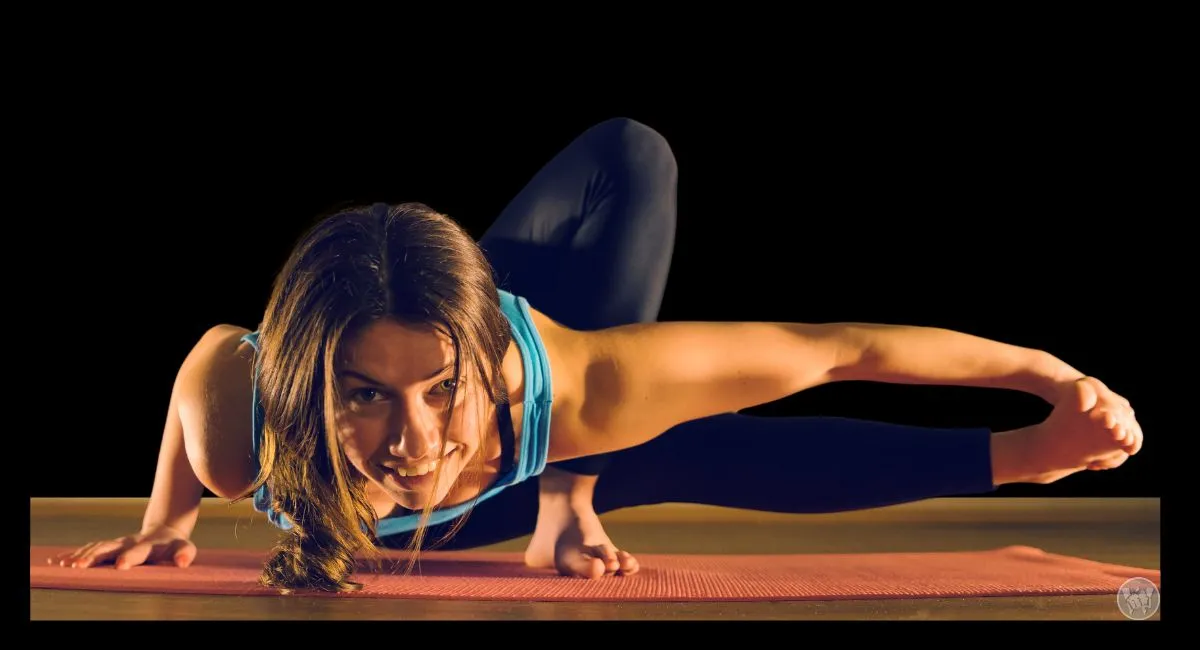Flexibility is an often overlooked aspect of fitness, yet it is a fundamental component of maintaining overall health, improving athletic performance, and preventing injury. Whether you’re an athlete or someone who simply wishes to improve their range of motion and feel more agile, incorporating regular flexibility training into your routine can yield impressive long-term benefits. These benefits extend beyond just muscle elongation; they also include enhanced circulation, improved posture, reduced muscle tension, and better mobility as you age.
However, achieving long-term flexibility requires consistency, dedication, and a strategic approach to training. Below are the top 10 flexibility exercises that can help you achieve lasting results. These exercises are effective, backed by science, and can be performed by people at any level of fitness.
1. Standing Forward Bend (Uttanasana)
The Standing Forward Bend is a staple in yoga and is incredibly effective for stretching the hamstrings, calves, and lower back. This stretch helps to increase flexibility in the posterior chain, which is important for anyone who spends long hours sitting or performing repetitive movements.
To perform the Standing Forward Bend:
-
Stand with your feet hip-width apart.
-
Slowly hinge at your hips, keeping your back straight as you fold forward.
-
Reach your hands towards the floor or grab your ankles for a deeper stretch.
-
Hold for 30 seconds to 1 minute, ensuring you breathe deeply and relax into the stretch.
Regular practice of this stretch can help reduce lower back tension and improve your overall posture. By enhancing flexibility in the hamstrings and lower back, you also reduce the likelihood of injury, particularly in activities like running or cycling.
2. Seated Forward Fold (Paschimottanasana)
This seated stretch is a powerful way to improve flexibility in the hamstrings, lower back, and calves. It also provides a gentle stretch for the spine, promoting better posture and spinal alignment.
To perform the Seated Forward Fold:
-
Sit on the floor with your legs extended straight in front of you.
-
Inhale to lengthen your spine, and as you exhale, hinge forward from your hips.
-
Reach for your feet, ankles, or shins, depending on your flexibility.
-
Hold for 30 seconds, and repeat 2–3 times.
This exercise is particularly beneficial for individuals who suffer from tightness due to prolonged sitting or who engage in activities that involve repetitive leg movements. It helps to lengthen the hamstrings and relieve stiffness in the back.
3. Lunge with a Twist (Lunge to Open)
The Lunge with a Twist combines a deep hip stretch with a spinal rotation, promoting both flexibility and mobility in the hips, lower back, and thoracic spine. This movement is especially valuable for athletes, as it can help increase hip and thoracic spine flexibility, both of which are essential for efficient movement patterns in many sports.
To perform the Lunge with a Twist:
-
Start in a lunge position with your right leg forward, left knee on the floor.
-
Place your left hand on the floor, and twist your torso to the right, reaching your right arm to the sky.
-
Hold the stretch for 20-30 seconds, then switch sides.
This stretch not only improves flexibility but also enhances your range of motion, which is key to avoiding stiffness and discomfort during other activities, especially those that require rotation like golf or tennis.
4. Cat-Cow Stretch (Marjaryasana-Bitilasana)
The Cat-Cow Stretch is a dynamic stretch that targets the spine, promoting mobility and flexibility in the neck, shoulders, and lower back. It’s an excellent exercise to integrate into your daily routine, especially for those who spend long hours sitting at a desk.
To perform the Cat-Cow Stretch:
-
Begin on all fours with your wrists directly beneath your shoulders and your knees beneath your hips.
-
Inhale as you arch your back (Cow position), lifting your chest and tailbone.
-
Exhale as you round your back (Cat position), tucking your chin to your chest and pulling your belly button towards your spine.
-
Repeat this fluid motion for 1-2 minutes, moving with your breath.
This exercise not only enhances flexibility but also relieves tension in the spine and neck. It’s ideal for reducing the stiffness caused by sitting for extended periods and is a perfect addition to any warm-up routine.
5. Hip Flexor Stretch (Lunge Stretch)
Tight hip flexors are a common problem, especially among those who sit for prolonged periods. The Hip Flexor Stretch helps to alleviate tightness in the hip region, which can improve posture, reduce lower back pain, and increase mobility.
To perform the Hip Flexor Stretch:
-
Start in a lunge position, with your right foot forward and your left knee on the floor.
-
Push your hips forward, feeling the stretch in the front of the left hip.
-
Hold for 30 seconds to 1 minute, then switch sides.
Incorporating this stretch regularly can improve hip mobility, which is crucial for walking, running, and squatting. The flexibility gained here can also improve overall lower-body function.
6. Child’s Pose (Balasana)
The Child’s Pose is a gentle stretch that provides relief for the lower back, hips, and thighs. It is an excellent stretch for anyone who experiences tightness in the lower body, and it’s also a great way to wind down after a more intense workout.
To perform Child’s Pose:
-
Start by kneeling on the floor with your big toes touching and knees spread wide.
-
Slowly lower your hips back towards your heels and extend your arms forward on the mat.
-
Rest your forehead on the ground and breathe deeply, holding the position for 1-2 minutes.
This stretch promotes relaxation and is a great way to release tension after long periods of sitting or standing. It also allows for gentle stretching in the spine, helping to improve posture and flexibility.
7. Butterfly Stretch
The Butterfly Stretch is ideal for increasing flexibility in the groin, hips, and inner thighs. It also provides a gentle stretch for the lower back and helps with pelvic mobility, which is essential for activities like yoga, dance, and martial arts.
To perform the Butterfly Stretch:
-
Sit on the floor with your legs bent and the soles of your feet together.
-
Hold your feet with your hands and gently press your knees toward the floor.
-
Hold the stretch for 30 seconds to 1 minute, breathing deeply.
This stretch is particularly useful for those who have tight hip adductors and need more flexibility in the lower body. It can also aid in improving posture by promoting better alignment of the pelvis.
8. Pigeon Pose (Eka Pada Rajakapotasana)
Pigeon Pose is a deep stretch for the hips, glutes, and hip flexors. It’s a great exercise for those who have tight hips due to sitting or intense physical activity. The pose promotes hip mobility, which can reduce lower back pain and improve overall flexibility.
To perform Pigeon Pose:
-
Start in a tabletop position and bring your right knee forward, placing it behind your right wrist.
-
Extend your left leg straight back behind you, and lower your hips toward the ground.
-
Hold the stretch for 30 seconds to 1 minute, then switch sides.
This is a powerful stretch for anyone dealing with tightness in the hip area or those looking to enhance their flexibility and mobility for activities like running or dancing.
9. Lateral Side Stretch
The Lateral Side Stretch targets the obliques, ribcage, and the muscles along the sides of the torso. This stretch is vital for improving flexibility in the upper body, especially for people who do a lot of forward-bending or seated activities.
To perform the Lateral Side Stretch:
-
Stand tall with your feet hip-width apart.
-
Reach your right arm overhead and gently lean to the left, feeling a stretch along the right side of your body.
-
Hold for 20-30 seconds, then switch sides.
This stretch helps to improve side-bending flexibility and can assist with reducing stiffness in the torso and lower back.
10. Neck and Shoulder Stretch
Tension in the neck and shoulders is a common issue, especially for those who work at desks or engage in physical activities that strain the upper body. The Neck and Shoulder Stretch can help alleviate this tension and improve flexibility in the upper body.
To perform the Neck and Shoulder Stretch:
-
Sit or stand with a straight posture.
-
Gently tilt your head toward your right shoulder, using your right hand to deepen the stretch.
-
Hold for 20-30 seconds, then switch sides.
This simple but effective stretch can improve mobility in the neck and shoulders, helping reduce stress and stiffness, particularly after long periods of computer use.
Conclusion
Incorporating flexibility training into your routine is one of the most effective ways to enhance your overall fitness, prevent injury, and maintain mobility as you age. These ten exercises provide a comprehensive approach to improving flexibility, targeting all major muscle groups and areas of the body. By practicing these stretches regularly, you’ll not only increase your range of motion but also improve your posture, reduce muscle tension, and enhance athletic performance. Flexibility is a lifelong pursuit, and with consistency and dedication, the benefits can last a lifetime.





